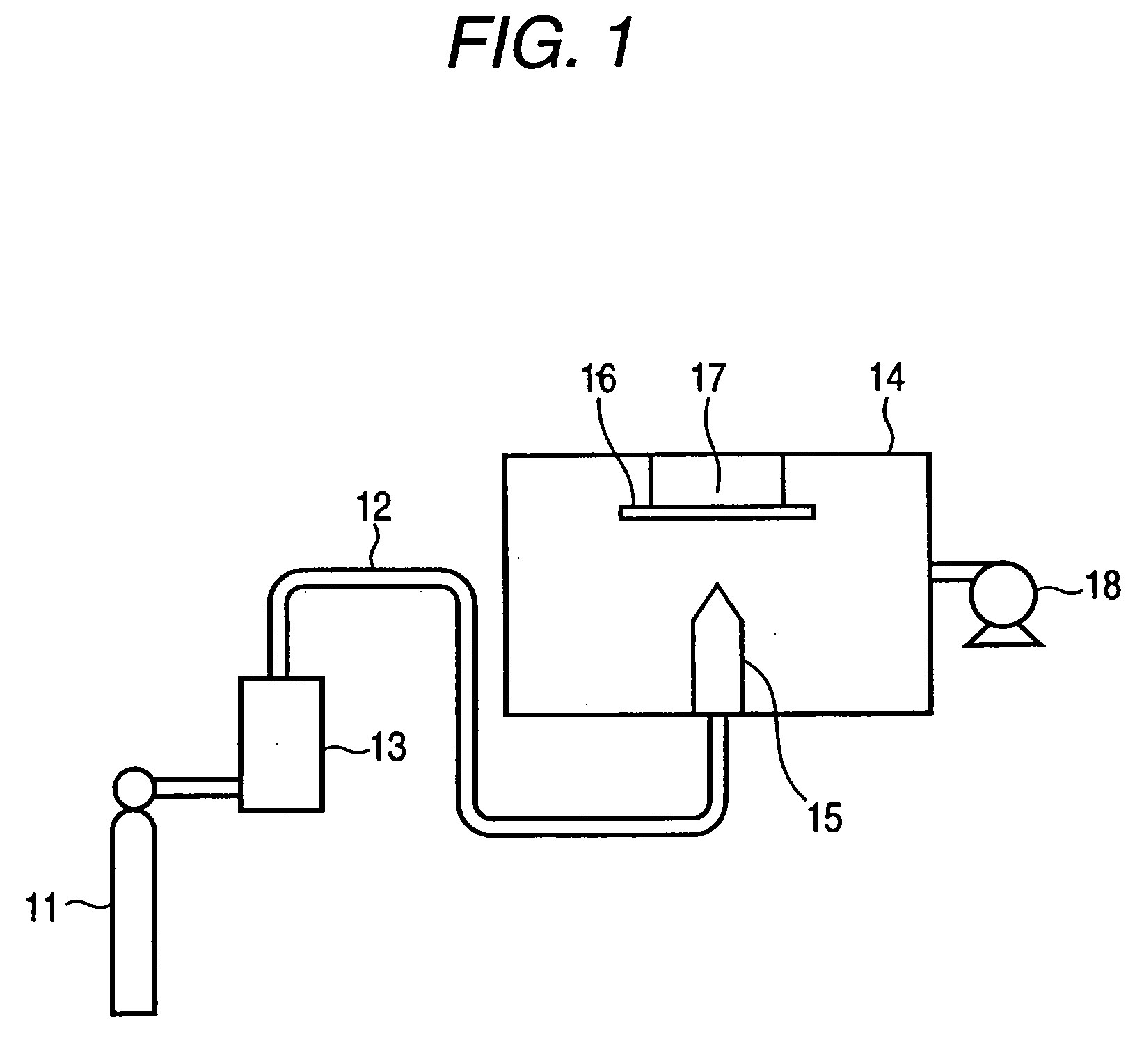Composite structure and production method thereof
- Summary
- Abstract
- Description
- Claims
- Application Information
AI Technical Summary
Benefits of technology
Problems solved by technology
Method used
Image
Examples
example 1
[0061]Yttrium oxide (Y2O3) fine particles and aluminum oxide (Al2O3) fine particles were prepared. 50%-average particle diameters on volumetric basis of the yttrium oxide fine particles and the aluminum oxide fine particles were 0.47 μm and 2.1 μm.
[0062]These fine particles were mixed at a number ratio of 1:10 (aluminum oxide fine particles:yttrium oxide fine particles) to obtain a particle mixture.
[0063]The particle mixture was charged into an aerosol generator of the apparatus, and an aerosol generated by supplying a nitrogen gas as a carrier gas at a feed rate of 5 L / min was injected to a quartz base material. Thus, an yttrium oxide film having a height of 10 μm, an area of 20 mm×20 mm, and a light transmitting property was formed on the base material.
[0064]A plasma resistance test result and a contact strength measurement result of the thus-obtained yttrium oxide film are shown in Table 1. In the plasma resistance test, plasma processing was performed by using a parallel flat pl...
PUM
| Property | Measurement | Unit |
|---|---|---|
| Length | aaaaa | aaaaa |
| Nanoscale particle size | aaaaa | aaaaa |
| Surface roughness | aaaaa | aaaaa |
Abstract
Description
Claims
Application Information
 Login to View More
Login to View More - R&D
- Intellectual Property
- Life Sciences
- Materials
- Tech Scout
- Unparalleled Data Quality
- Higher Quality Content
- 60% Fewer Hallucinations
Browse by: Latest US Patents, China's latest patents, Technical Efficacy Thesaurus, Application Domain, Technology Topic, Popular Technical Reports.
© 2025 PatSnap. All rights reserved.Legal|Privacy policy|Modern Slavery Act Transparency Statement|Sitemap|About US| Contact US: help@patsnap.com


